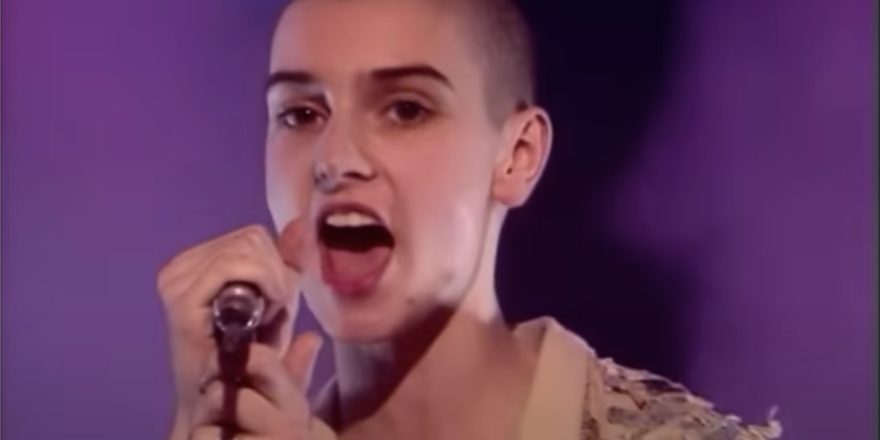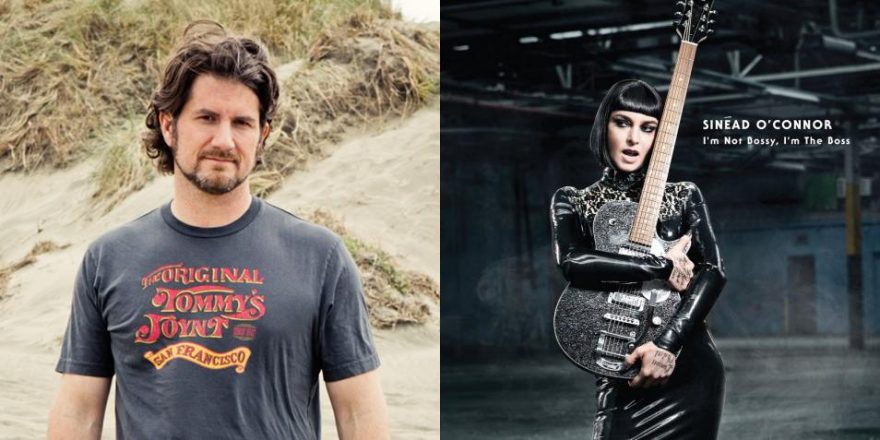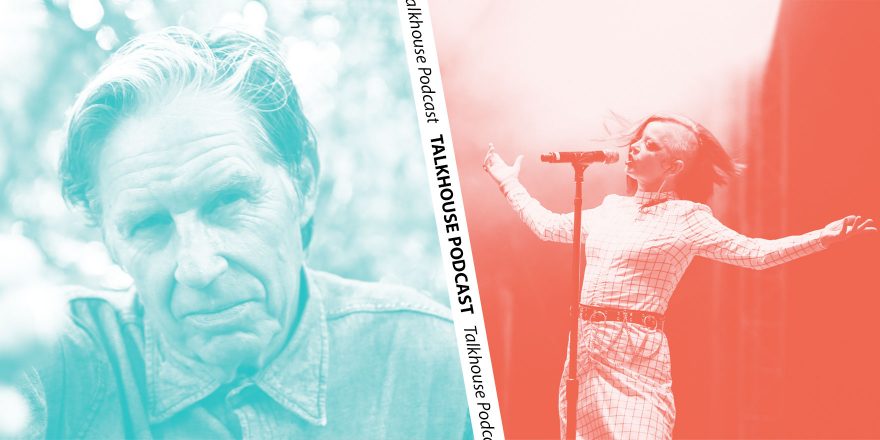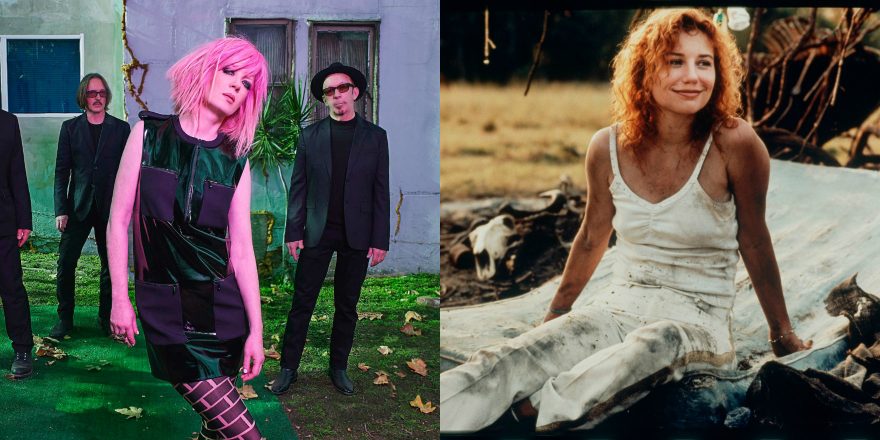I never got to meet her. I always thought I would. I always imagined I’d get to talk with her — which is strange, because I don’t have that feeling hardly ever.
I remember the first time I ever heard her. I was watching Top of the Pops, as children in Britain often do. Or not even a child at that point — I was the same age as her. We were both fire horses born in 1966. I think most artists had always seemed older than me, but for the first time, she was someone who felt like a peer. Here was this young woman who looked like she and I could be hanging out. She dressed the way we dressed, and musically she touched on all of the things we loved. I loved her strong, uncompromising image. I was bewitched by her immediately.
As a singer myself, listening to her is like being taught by a master. She double tracked her vocals in a very loose way, which I’ve always been fascinated with — and have always wanted to emulate, but I work in a band where looseness is not the favored approach. On our very first record, there’s a song at the end, “Milk” (which was the first song I ever wrote melodically and lyrically that I brought in to the band) and I employ a falsetto in the chorus, and that was definitely me being inspired by Sinéad. I was always crazy about how she could always flip her voice from a howl to a whisper to a falsetto. I love her mastery of that. It’s actually really, really hard to do.
I continue to learn how to sing by listening to her records. She’s that great. She had unbelievable control over her voice — and she could take her voice and wrap it round these extraordinary revelations of the human soul. That is really rare. You know, Bob Dylan is a great writer, but he’s not the best singer in the world. What’s extraordinary about Sinéad is she was a fucking amazing writer and an incredible singer, all in one package.
On our most recent record, there’s one song in particular called “Waiting for God,” which is talking about Atatianna Jefferson and all of the injustices that Black Americans are having to, on a daily basis, battle. That was inspired by “Black Boys on Mopeds,” for sure. It’s something that is definitely an echo from Sinéad. When you fall in love with an artist and you’re an artist yourself, their influence is in everything you do. The artists that make you sit up and take notice, you collect them. They’re in there, and that informs your own taste and how you move forward in your life. She in particular moved me because she was my peer. I can’t say that for any other artists I’ve encountered — we were born in the same year and have the same references and a lot of the same experiences.
There are so many layers to what has happened to Sinéad O’Connor. There’s sexism, misogyny, cruelty, capitalism and profit, short-termism, idiocy — the list is endless. To talk about her in any appropriate way really requires hours and hours of nuanced conversation.
Anyone who professes to be shocked by her death hasn’t been paying attention, or is dead inside. It was so glaringly apparent that she was very vulnerable and was clearly begging for help. I mean, she literally begged for help. She was, over the years, in the throes of some extreme distress and mental anguish, but I do think the final nail in the coffin was the death of her son Shane. When he died, I really did think to myself, Alright, there is literally no saving her now. She was already on the precipice, and it just felt like a countdown.
The problem is, our society is so primitive and so cruel — especially the entertainment industry. There’s a lust for shaming because it creates scandal, and scandal sells. That’s, I think, why the world enjoys destroying people: They make money from it. There is still very little interest in adulating women. The world is very quick to fetishize and idolize the male rock star, but won’t do it with the female rock star who has agency. They’re happy to promote the sexy kittens who wear nice clothes, smile a lot, and look fuckable, but who don’t really write and have very little to say. But they’re not comfortable with the idea of someone like Sinéad O’Connor — who was confident enough in her own intellect and her beliefs and her moral compass to stand up and protest against what she saw as flagrant human rights abuses around the world. They hated her for it. They hated that she wasn’t looking to be told what to say. They hated that she wasn’t looking for approval. They loathed that she shaved her head and basically put her finger up to the culture in which we all exist. And they made her pay for that. They punished her over and over and over again. No punishment was ever enough.
Women who are opinionated or refuse to appeal to the male gaze, and who refuse to play a role that is deemed appropriate for them in our society — those are the women who are shoved in a drawer and ignored until they die. Even if Sinéad had enjoyed one-tenth of the outpouring and admiration that has occurred since her death, I think she may very well have been in a different place as an artist.
The only thing that gives me a small amount of comfort was that she released her absolutely stunning memoir. She got to say some things that needed to be said, and to put her own life in her own creative subcontext. Then, of course, there was the release of her wonderful documentary.
What I find disturbing since she’s died is this focus on the one incident on Saturday Night Live when she tore up the photograph of the Pope. Yes, that was an instrumental moment in her career, but she was so much bigger than that. Lest we forget (which I do feel like the pop music press is loathe to acknowledge) her musicianship, her genius, and her glorious, brilliant, once-in-a-generation talent. That is the foremost thing that I always want to remember about her — and that I think she’d want us to remember, along with her wicked sense of humor, her compassion, and her rebelliousness. All of these things make up this incredibly complex character, and the cherry on top was her momentous, god-given talent. It set her in line with so many of the greats — Billie Holiday, Nina Simone, Amy Winehouse — who were all able to translate the human experience through their voices.
Her death has really shaken me in ways that I did not expect. But that’s the power of a voice that is able to articulate a lot of your private pains and thoughts. That’s why we fall so deep in love with artists: They provide a means by which we can interface with the world, in a healthier fashion than without them.
Sinéad knew herself how great she was. And yet, no matter what she did, she was pilloried, ignored, squished. In some respects, she was a prophet. Her beliefs were always in the right place and on the right side of history.
The thing that I find so painful is that everything she protested, she was right about — and that her protest came from her own extreme suffering. It’s almost biblical, in a way. When your mother is the main character in your play — when it’s your mother who is your primary betrayer — that will either destroy you or instruct you. Sinéad, because of the exceptional character that she was, took all of that suffering and pain and turned it into something unbearably beautiful. That is such a rare gift that she left us with. We’ve lost a once-in-a-lifetime artist who we will never see the likes of again. She was a great, and she will be remembered as such.
As told to Annie Fell. 






